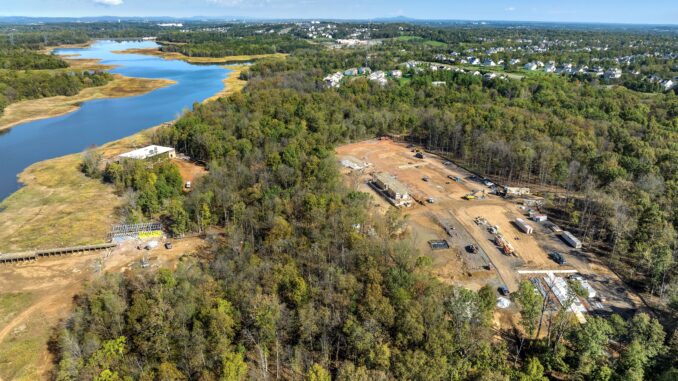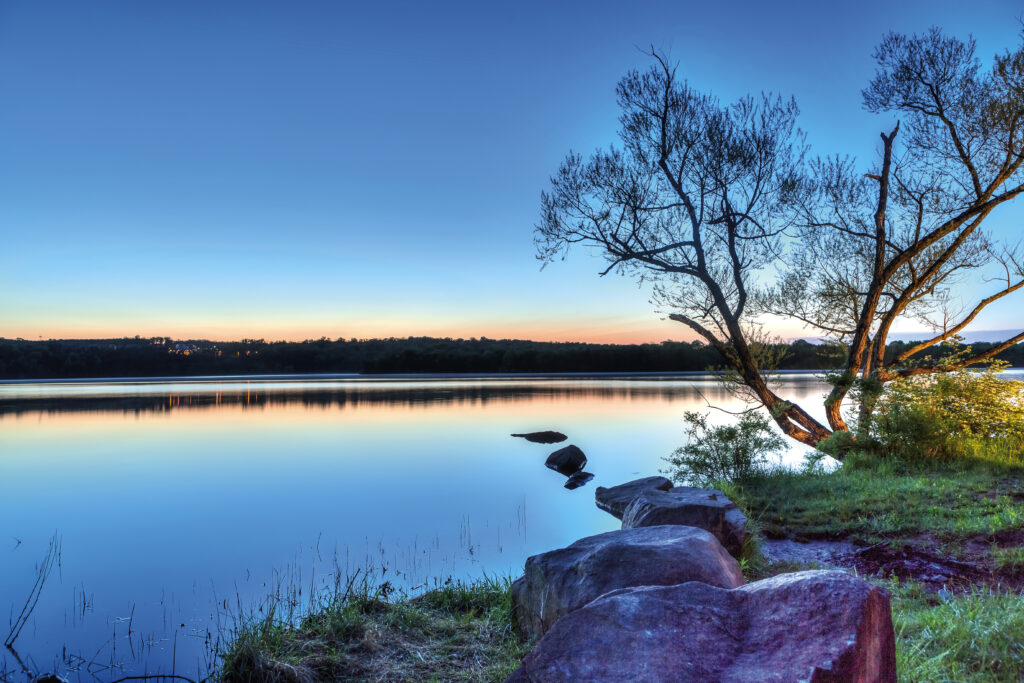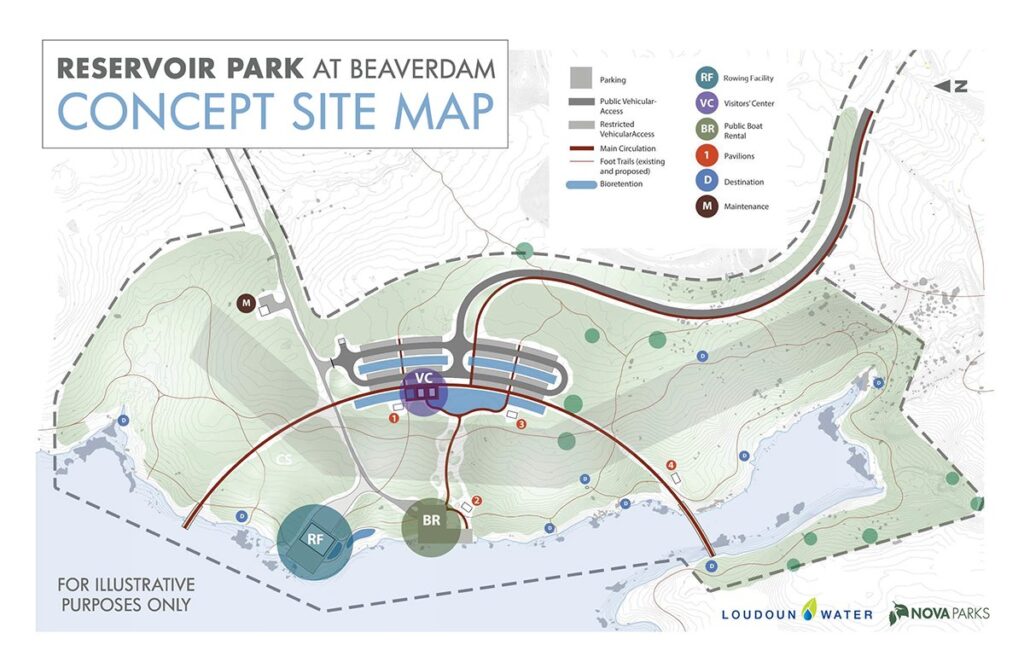
ABOUT DAM TIME
By Paul McCray
Paul McCray is a well-known local historian and the 2011 recipient of the Thomas Balch Library’s Loudoun History Award. He has also worked with the Northern Virginia Regional Parks Authority (NOVA Parks) for nearly five decades. NOVA Parks is partnering with Loudoun Water to develop the new Reservoir Park along the shores of the Beaverdam Reservoir on Ashburn’s western edge, so we thought McCray was the ideal person to share a history of the reservoir with the readers of Ashburn Magazine.
The story of how Beaverdam Reservoir came to be starts in 1959 when drinking water wells on which the city of Fairfax had relied for 30 years were failing.
With no lakes or large streams within the city to draw from, city leaders looked to the west and obtained permission to dam part of Goose Creek as a water supply. The dam was built at a spot just across Belmont Ridge Road from today’s Belmont Greene neighborhood. Treated water from the new Goose Creek Reservoir began flowing to Fairfax via a pipeline along the W&OD Railroad as far as Hunter Mill Road, then through Oakton to the city.

By 1971, the Goose Creek Reservoir was no longer providing enough water, so Fairfax city received approval to build a second reservoir on Beaverdam Creek — a small stream that intersected with Goose Creek at a spot just south of today’s Dulles Greenway. Water could be released from the new Beaverdam Reservoir into Goose Creek as needed during times of high water use in the city or drought.
The city of Fairfax decided in 2013 to leave the water business and become part of Fairfax Water, which serves 2 million residents in the Fairfax area. Loudoun Water negotiated the purchase of the two reservoirs and the land around them to boost water resources for the ever-growing population south and east of Leesburg.
The Goose Creek Reservoir holds about 300 million gallons of water, but the Beaverdam Reservoir is much, much larger – holding an additional 1.3 billion gallons to support Loudoun’s water supply.
The water level was lowered in 2016 to allow Loudoun Water to make much-needed repairs to the Beaverdam structures. Once that was done, the lake was refilled naturally through rainfall.
For many years, the Beaverdam reservoir attracted a small number of people who informally hiked the perimeter and others who carried in kayaks for boating. Because there was considerable public interest in using the reservoir for recreation, Loudoun Water worked with NOVA Parks in 2015 to create a plan for the property.
Officials say it made sense for the two agencies to team up. NOVA Parks already owned about 450 acres around the reservoir from its development of the adjacent Brambleton Golf Course, and Loudoun Water runs the reservoir.
Since 2019, design teams and construction crews have been hard at work creating Loudoun’s first waterfront park at the 350-acre Beaverdam Reservoir. As part of that process, the water level was lowered again that year and has been gradually refilling.
Reservoir Park, which will have its access point by the ballfields at Belmont Ridge Road and Northstar Boulevard, will feature a new entrance road, parking lot, welcome center, restroom building, crew rowing facility, boat rental facility, pavilions, trails, waterfront boardwalks, a bridge, plantings, site utilities and educational exhibits.
There will be an “out and back” improved trail for three miles along the east shoreline starting at the visitor center. A natural surface trail will run the remaining four miles around the lake to complete the full seven-mile loop.
All the facilities have been designed with source water protection in mind. Keeping pollutants out of the water before it enters the treatment system will help ensure the best water quality, so no gas boat motors or swimming will be allowed.

With 650 acres of public land around the 350-acre reservoir, the area is a valuable habitat for a wide variety of wildlife. Hikers, kayakers, crew rowers and fishermen can expect to see birds such as herons, hawks and an occasional bald eagle, along with many of the mammals common to Loudoun – deer, raccoons, skunks, squirrels and more.
Park improvements are projected to finish and open to the public by summer 2024.

